 MataSeca,MataSuja Louise Ganz
MataSeca,MataSuja Louise Ganz


 MataSeca,MataSuja Louise Ganz
MataSeca,MataSuja Louise Ganz

Os trabalhos reunidos na exposição Mata Seca, Mata Suja dão notícia do reencontro de Louise Ganz com o exercício da pintura, ofício tão antigo como os fazeres ancestrais, pré-capitalistas, em meio aos quais surge a própria arte, ainda que plantas, campos, cartografias e a escuta do lugar - experiências que também dão origem a esses trabalhos -, estejam no horizonte da artista desde a época de seu Lotes Vagos (2004).
Esse reencontro, motivado também pelo diálogo com outros artistas e com seus alunos na Escola Guignard, por um lado, não deixa de ser um reencontro também com sua própria formação, realizada na interface entre pintura e arquitetura. Assim, podemos dizer que essas pinturas envolvem uma revisão crítica de seu próprio processo de trabalho e o questionamento do viés conceitual que dominou a arte contemporânea na primeira década dos anos 2000, atravessando também a sua produção. Outro aspecto que entra em crise nesse percurso é a ideia do artista como uma espécie de etnógrafo, muito recorrente naquela década, o que pressupõe uma posição de distanciamento e define o fazer artístico como pesquisa ou projeto, o que estabelece hierarquias entre pensar, sentir e fazer, entre prática e teoria.
The works gathered in the exhibition Mata Seca, Mata Suja reveal Louise Ganz's reunion with the practice of painting, a craft as old as ancestral, pre-capitalist practices, in the midst of which art itself emerges, even if plants, fields, cartography and listening to the place - experiences that also give rise to these works - have been on the artist's horizon since the time of her Lotes Vagos (2004).
This reunion, also motivated by dialogue with other artists and with her students at the Escola Guignard, on the one hand, is also a reunion with her own training, carried out at the interface between painting and architecture. Thus, we can say that these paintings involve a critical review of her own work process and the questioning of the conceptual bias that dominated contemporary art in the first decade of the 2000s, also permeating her production. Another aspect that enters into crisis in this journey is the idea of the artist as a type of ethnographer, very recurrent in that decade, which presupposes a position of distance and defines artistic creation as research or project, which establishes hierarchies between thinking, feeling and do, between practice and theory.
O trabalho atual de Louise, feito a partir de seus deslocamentos cotidianos no cerrado que rodeia seu atelier, sem roteiro prévio, ao contrário, se vale justamente da proximidade e não do projetar algo a ser feito num território, como uma pesquisa de campo, cuja síntese será feita por meio de documentos, textos e imagens, ainda que a fotografia seja um recurso utilizado pela artista. Ao pintar Louise refaz a experiência de habitar a paisagem com o corpo, e não apenas pelo olhar, como um trabalho de memória corporal. Testemunham esse trabalho as texturas das rochas e das folhas, que parecem ter sido conhecidas no tocar; a água que corre do ponto de vista de quem está submerso e emite para nós, aqui fora do quadro, o frescor do banhar-se. A escala desses trabalhos reforça essa sensação de presença, de habitar, a meu ver, fundamental ao trabalho da artista como um todo, que rearticula, inclusive, a relação pintura-arquitetura presente na base de sua formação.
Se alinhamos ainda a retomada da pintura no trabalho de Louise ao interesse crescente por essa linguagem, que hoje e historicamente tem na dinâmica morterenascimento a sua forma de permanecer atual, seus trabalhos guardam também uma contribuição singular. Se grande parte da pintura feita hoje se ancora na questão temática e na figuração, o trabalho de Louise quer justamente nos colocar frente-a-frente com o ato de pintar, com a elaboração significativa da matéria sobre o suporte, no tempo, nos colocar dentro do diálogo com a imagem, que surge e se modifica a cada gesto, sem perspectivas e pontos de fuga.
Louise's current work, based on her daily movements in the cerrado that surrounds her studio, without a prior itinerary, on the contrary, relies precisely on proximity and not on projecting something to be done in a territory, like field research, whose synthesis will be made through documents, texts and images, even though photography is a resource used by the artist. When painting, Louise recreates the experience of inhabiting the landscape with her body, and not just through her eyes, as a work of bodily memory. This work is witnessed by the textures of the rocks and leaves, which seem to have been known by touch; the water that flows from the point of view of those who are submerged and emits to us, here outside the frame, the freshness of bathing. The scale of these works reinforces this feeling of presence, of inhabiting, in my view, fundamental to the artist's work as a whole, which even rearticulates the painting-architecture relationship present at the basis of her training.
If we also align the resumption of painting in Louise's work with the growing interest in this language, which today and historically has its way of remaining current in the deathrebirth dynamic, her works also have a unique contribution.
If much of the painting done today is anchored in thematic issues and figuration, Louise's work precisely wants to bring us face-to-face with the act of painting, with the significant elaboration of the matter on the support, in time, to put us within the dialogue with the image, which emerges and changes with each gesture, without perspectives or vanishing points.



Rocha e Paisagem
Acrílica sobre tela - Díptico
Acrylic on canvas - Diptych
194 x 306 cm
Está posto claramente nesses trabalhos que o compromisso da artista é com a experiência vivida e com o exercício da pintura, e não com a discursividade do real, nem com a sua ilustração.
Desse modo, não há uma verdade científica a ser lida nessas pinturas sobre o bioma cerrado, ao contrário, é o cerrado que se reinventa no pintar de Louise, com suas muitas variações típicas e atípicas, matas fechadas e abertas, campos limpos, sujos e murundus. Essa paisagem misteriosa e diversa, da qual se sabe pouco, como reconhece a artista, se oferece gratuitamente como espaço para o exercício ficcional da pintura, como se ofereceram ordinariamente os aspargos pintados por Édouard Manet em 1880, para muitos a pintura inaugural da arte moderna. Através das pinturas de Louise podemos afirmar que pintar é também sustentar esse embate no terreno da história da arte. Pintar, como disse certa vez o artista Carlos Zílio, implica no apagamento dos fantasmas que se interpõem entre o pintor e a tela, antes mesmo do primeiro gesto, a lhe interpelar sobre o que ainda se pode acrescentar ao mundo por meio desse ofício milenar.
A persistência da artista nesse exercício, que resulta nas suas obras atuais, se mostra de diversas maneiras, mas, especialmente, na sobreposição de infinitas camadas, de velaturas, no retorno ao trabalho, no apagamento e na inscrição da imagem até a exaustão do suporte, nesse diálogo que segue, muitas vezes ao longo de meses, até que o trabalho diga chega.
It is clearly stated in these works that the artist's commitment is to the lived experience and the practice of painting, and not to the discursiveness of reality, nor to its illustration. Thus, there is no scientific truth to be read in these paintings about the cerrado biome, on the contrary, it is the cerrado that is reinvented in Louise's painting, with its many typical and atypical variations, closed and open forests, clean, dirty and murundus. This mysterious and diverse landscape, about which little is known, as the artist acknowledges, offers itself freely as a space for the fictional exercise of painting, as the asparagus painted by Édouard Manet in 1880, for many the inaugural painting of modern art, was ordinarily offered. Through Louise's paintings we can say that painting is also supporting this clash in the field of art history. Painting, as the artist Carlos Zílio once said, implies erasing the ghosts that stand between the painter and the canvas, even before the first gesture, asking them about what can still be added to the world through this ancient craft.
The artist's persistence in this exercise, which results in her current works, is shown in several ways, but, especially, in the overlapping of infinite layers, of stains, in the return to work, in the erasure and inscription of the image until the support is exhausted in this dialogue that continues, often over months, until the work says enough is enough.
 Água e Neblina / Acrílica sobre tela - Políptico / Acrylic on canvas - Polyptych / 160 x 450 cm / Página seguinte - Detalhe / Next page - Detail
Água e Neblina / Acrílica sobre tela - Políptico / Acrylic on canvas - Polyptych / 160 x 450 cm / Página seguinte - Detalhe / Next page - Detail

Esse modo de fazer, podemos dizer, tem um caráter feminino, na medida em que os gestos que conformam a sua pintura não são "geniais", não são jorrados na tela tal qual um gozo assertivo, rápido e espetacular, como performado de forma emblemática pelos drippings de Jackson Pollock. Antes são a sustentação desse embate com a pintura no tempo, processo que se dobra sobre si mesmo muitas vezes, incluindo coragem e hesitação, numa temporalidade espiralar que tem a densidade do gozo feminino, como os verdes, cinzas, laranjas, como o som de pássaro e o vento que sopra nos emaranhados de rocha, água e capim das pinturas de Louise.
Izabela Pucu março de 2024
This way of doing things, we can say, has a feminine character, in the sense that the gestures that make up her painting are not "genius", they are not poured onto the canvas like an assertive, quick and spectacular enjoyment, as performed in an emblematic way by Jackson Pollock drippings. Rather, they are the support of this clash with painting in time, a process that folds in on itself many times, including courage and hesitation, in a spiral temporality that has the density of feminine enjoyment, like greens, grays, oranges, like the sound of bird and the wind that blows through the tangles of rock, water and grass in Louise's paintings.
Izabela Pucu march, 2024
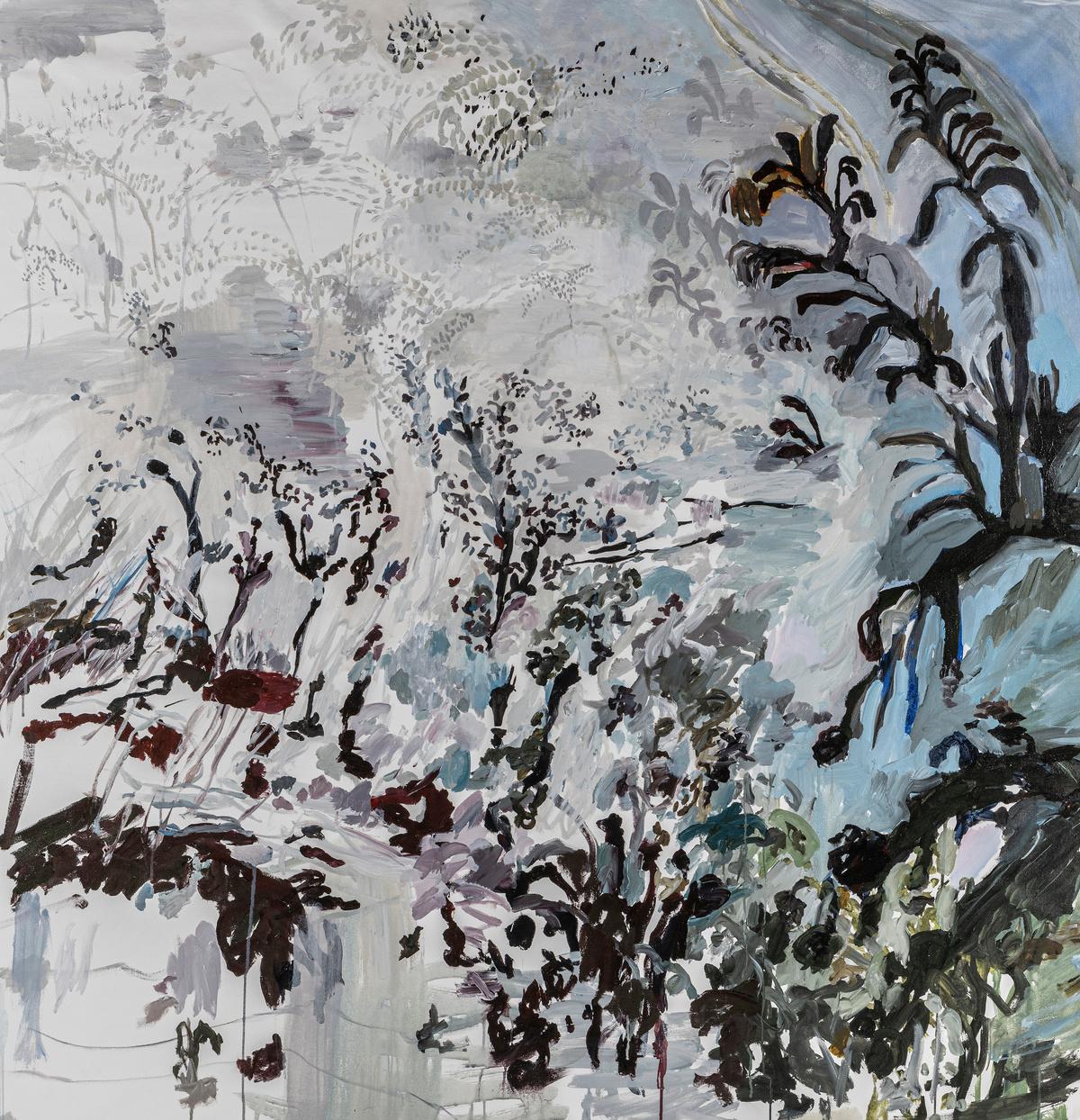 Campo Sujo e Murundu
Acrílica sobre tela
Acrylic on canvas 158 x 160 cm
Campo Sujo e Murundu
Acrílica sobre tela
Acrylic on canvas 158 x 160 cm

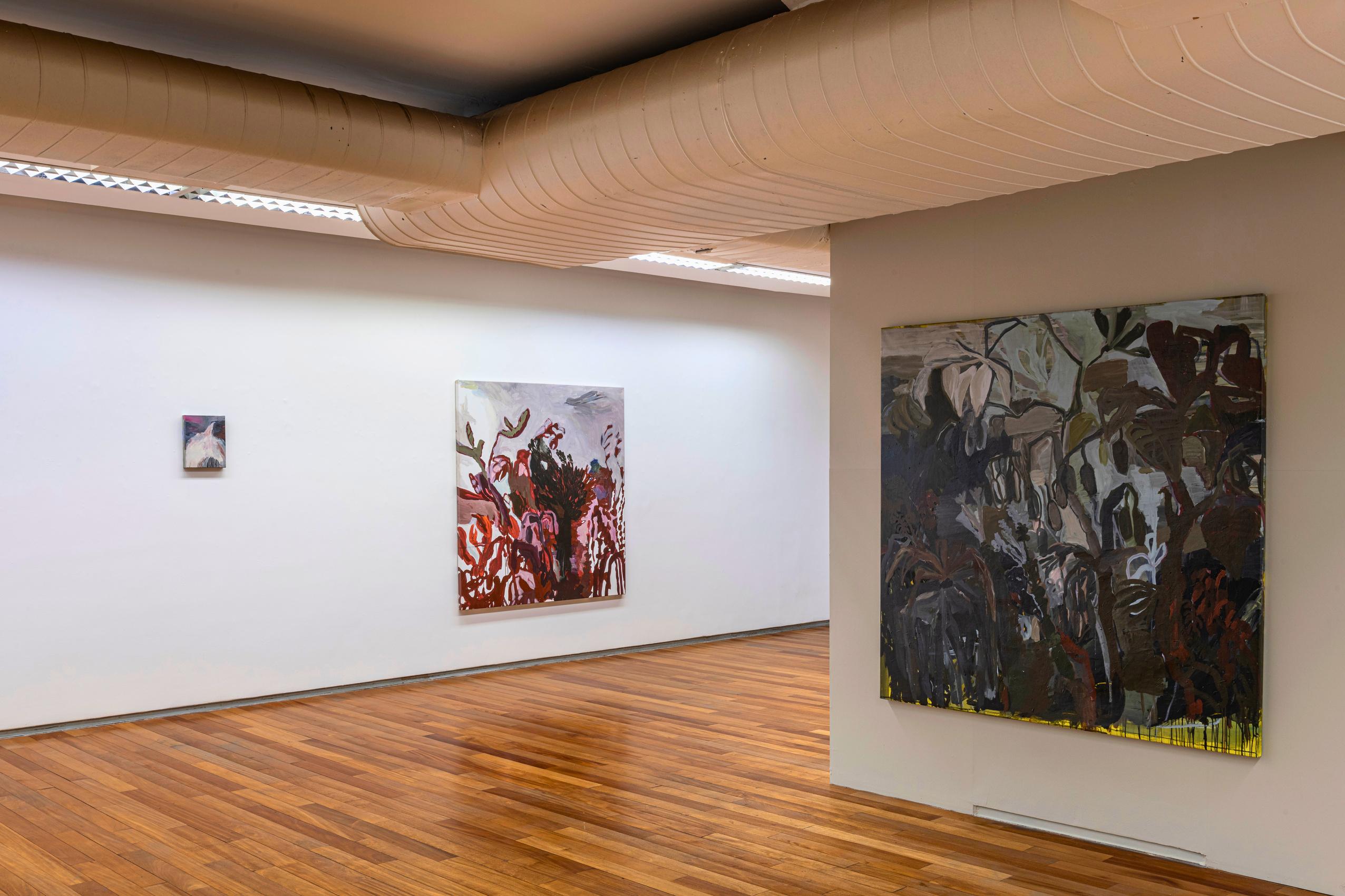
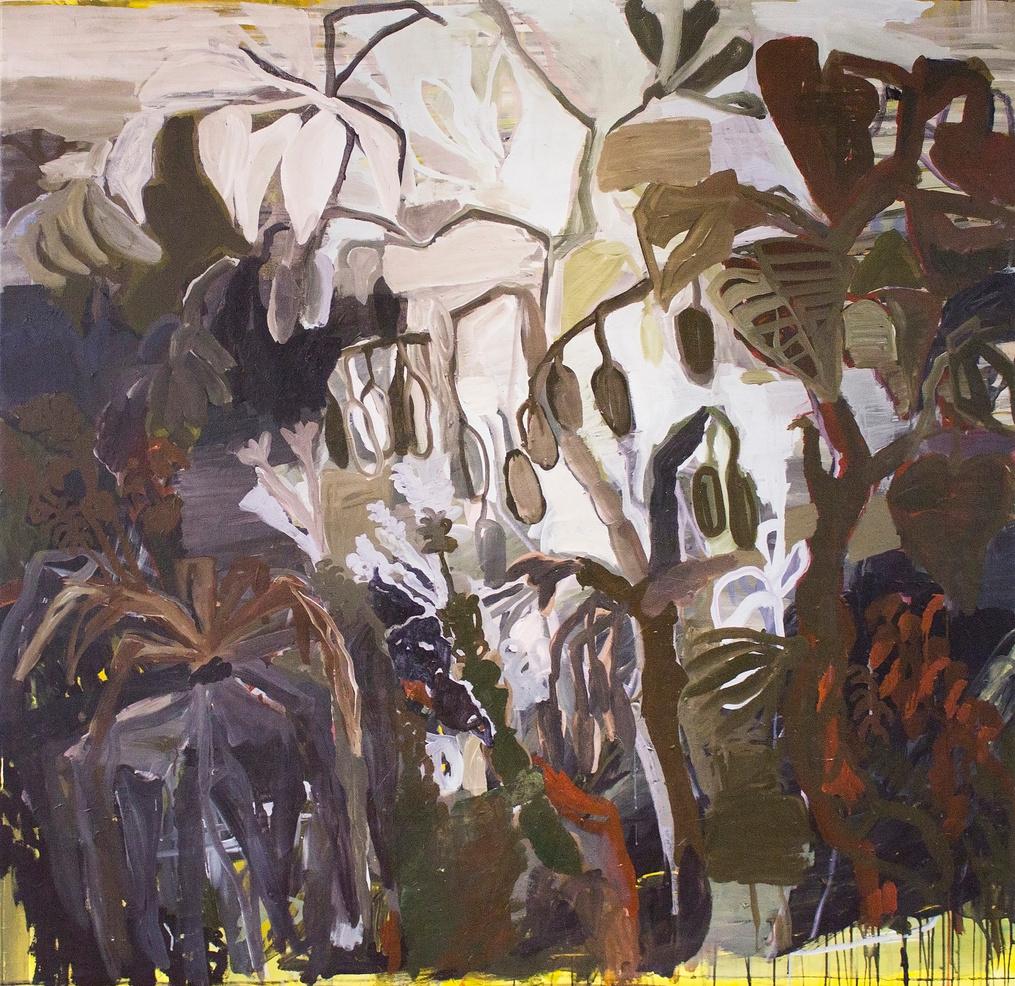 Mata Cerrado
Acrílica sobre tela
Acrylic on canvas
158 x 160 cm
Mata Cerrado
Acrílica sobre tela
Acrylic on canvas
158 x 160 cm


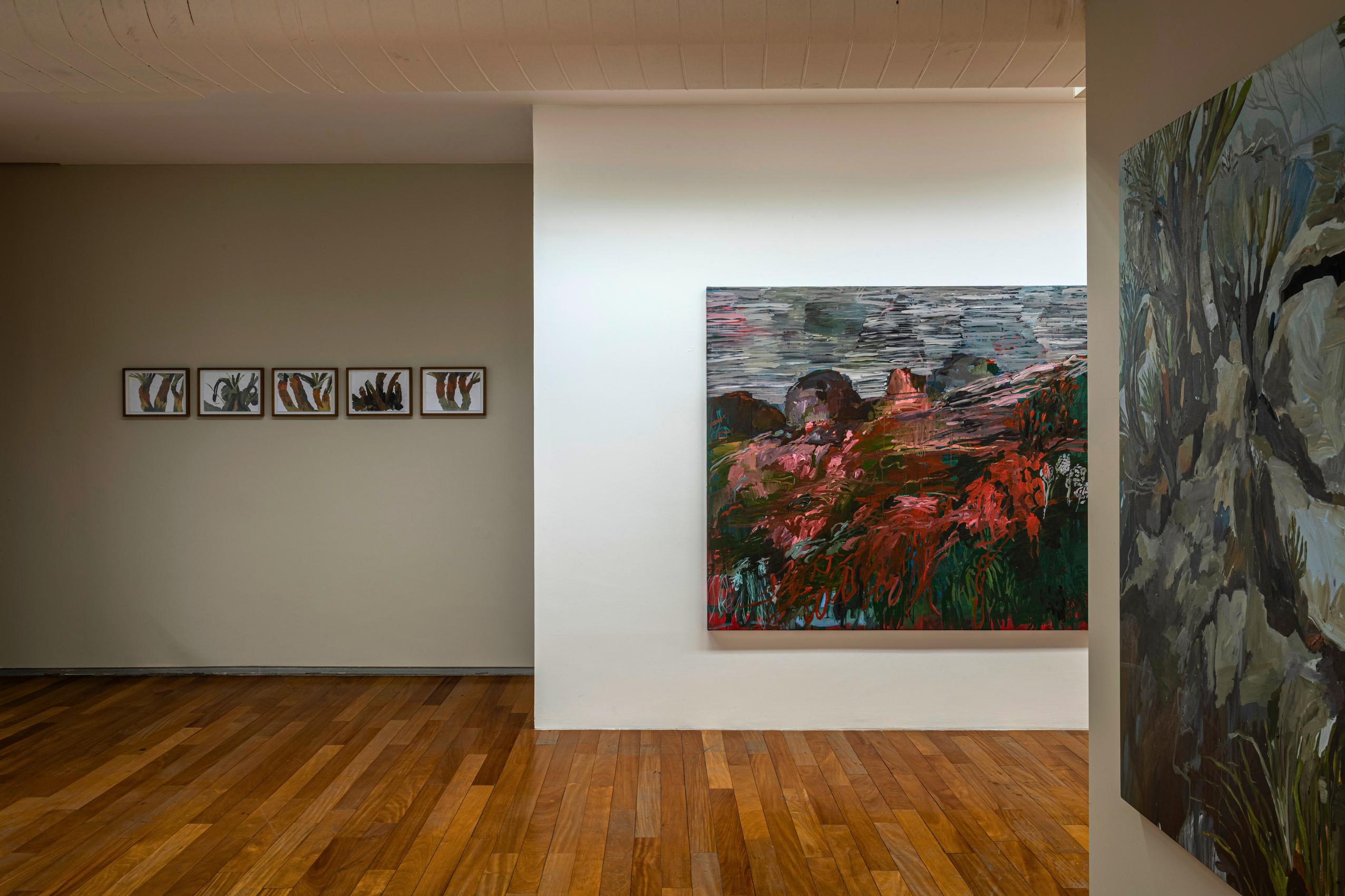 Página anterior / Previous page - Paisagem com Serra / Detalhe - Acrílica sobre tela / Detail - Acrylic on canvas / 153 x 176 cm
Página anterior / Previous page - Paisagem com Serra / Detalhe - Acrílica sobre tela / Detail - Acrylic on canvas / 153 x 176 cm
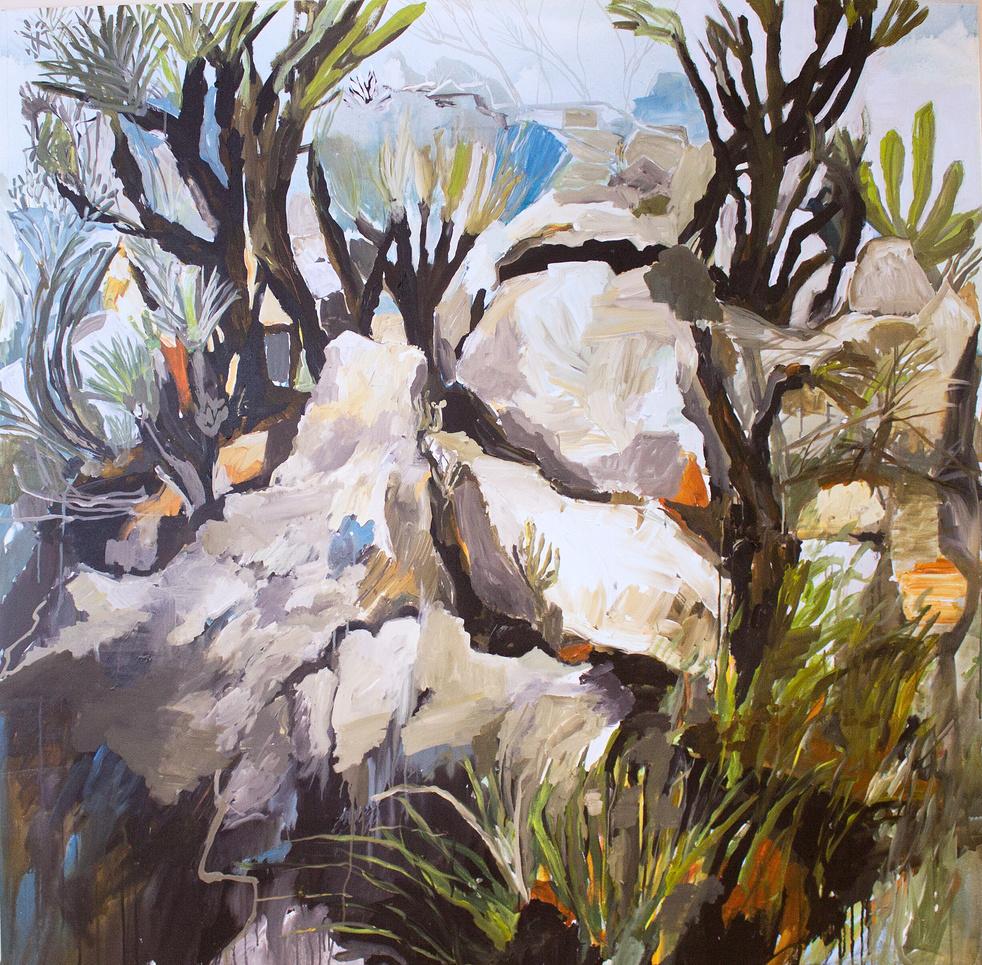 Rocha e Fenda
Acrílica sobre tela
Acrylic on canvas
158 x 157,5 cm
Rocha e Fenda
Acrílica sobre tela
Acrylic on canvas
158 x 157,5 cm

 Anotações
Acrílica sobre papel
Acrylic on paper
26,5 x 35,5 cm cada / each
Anotações
Acrílica sobre papel
Acrylic on paper
26,5 x 35,5 cm cada / each
 Mata e Amarelo
Acrílica sobre tela
Acrylic on canvas
158 x 160 cm
Mata e Amarelo
Acrílica sobre tela
Acrylic on canvas
158 x 160 cm
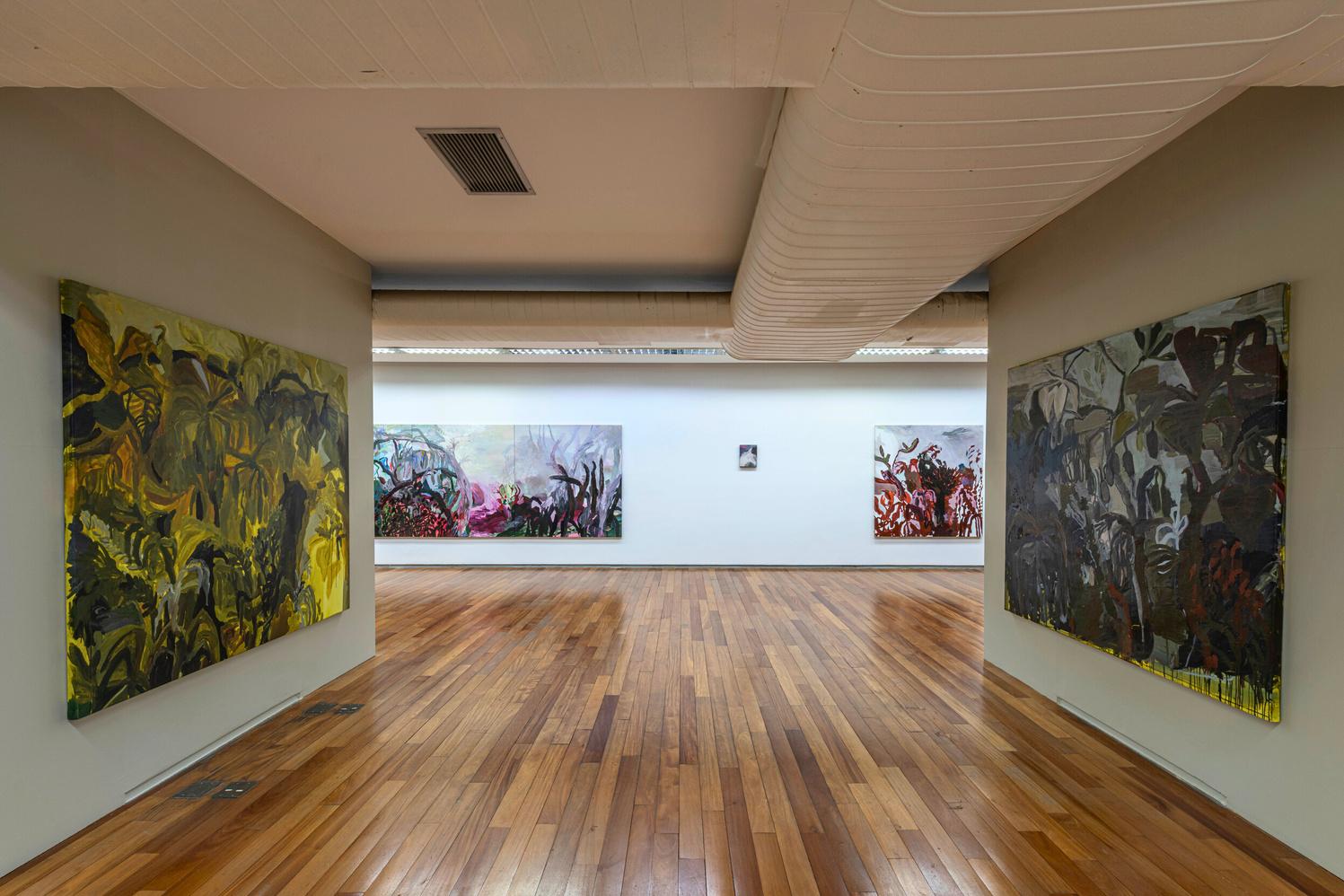 Página seguinte / Next page - Mata Suja
Detalhe - Acrílica sobre tela / Detail - Acrylic on canvas / 160 x 210 cm
Página seguinte / Next page - Mata Suja
Detalhe - Acrílica sobre tela / Detail - Acrylic on canvas / 160 x 210 cm
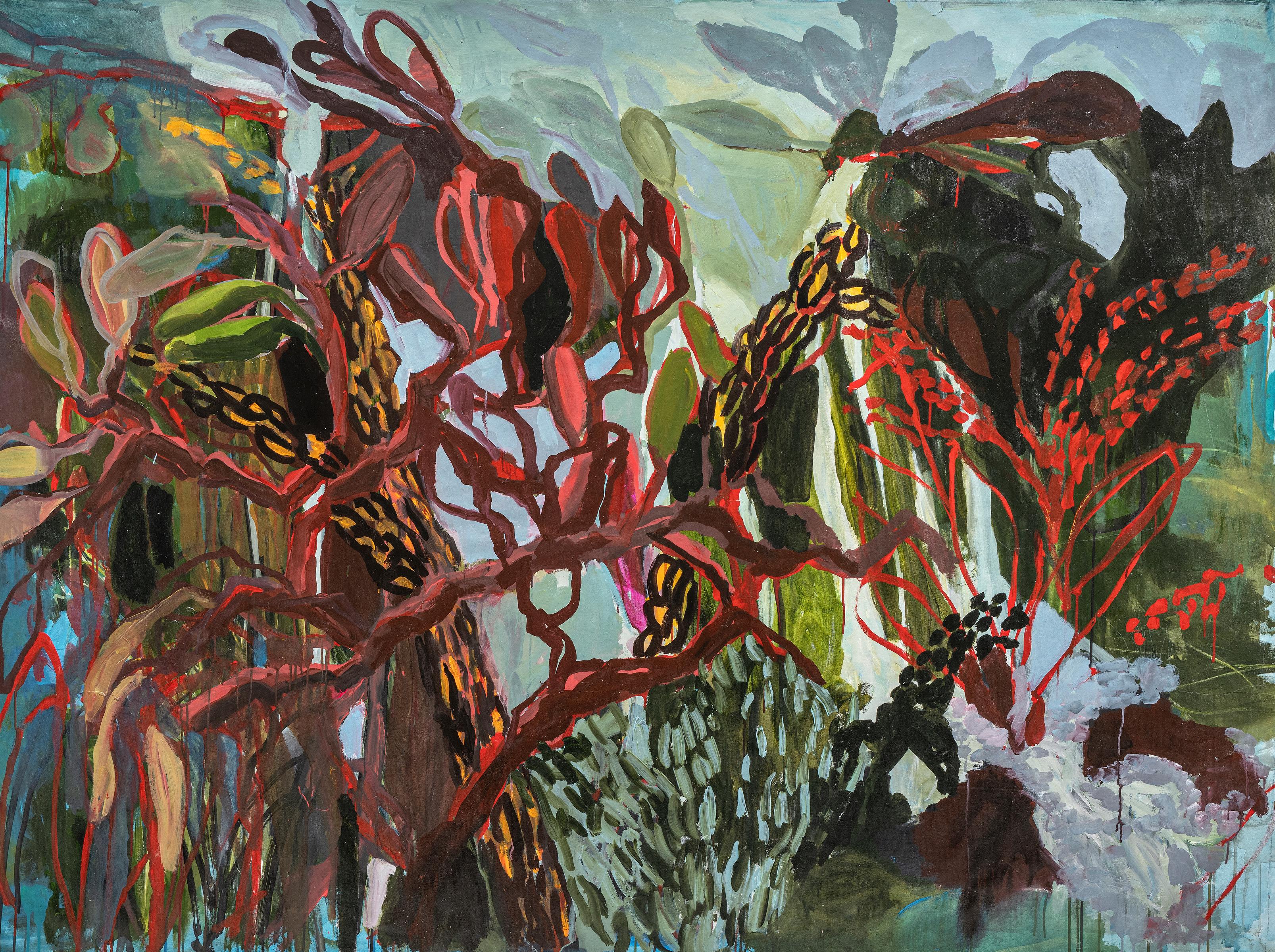

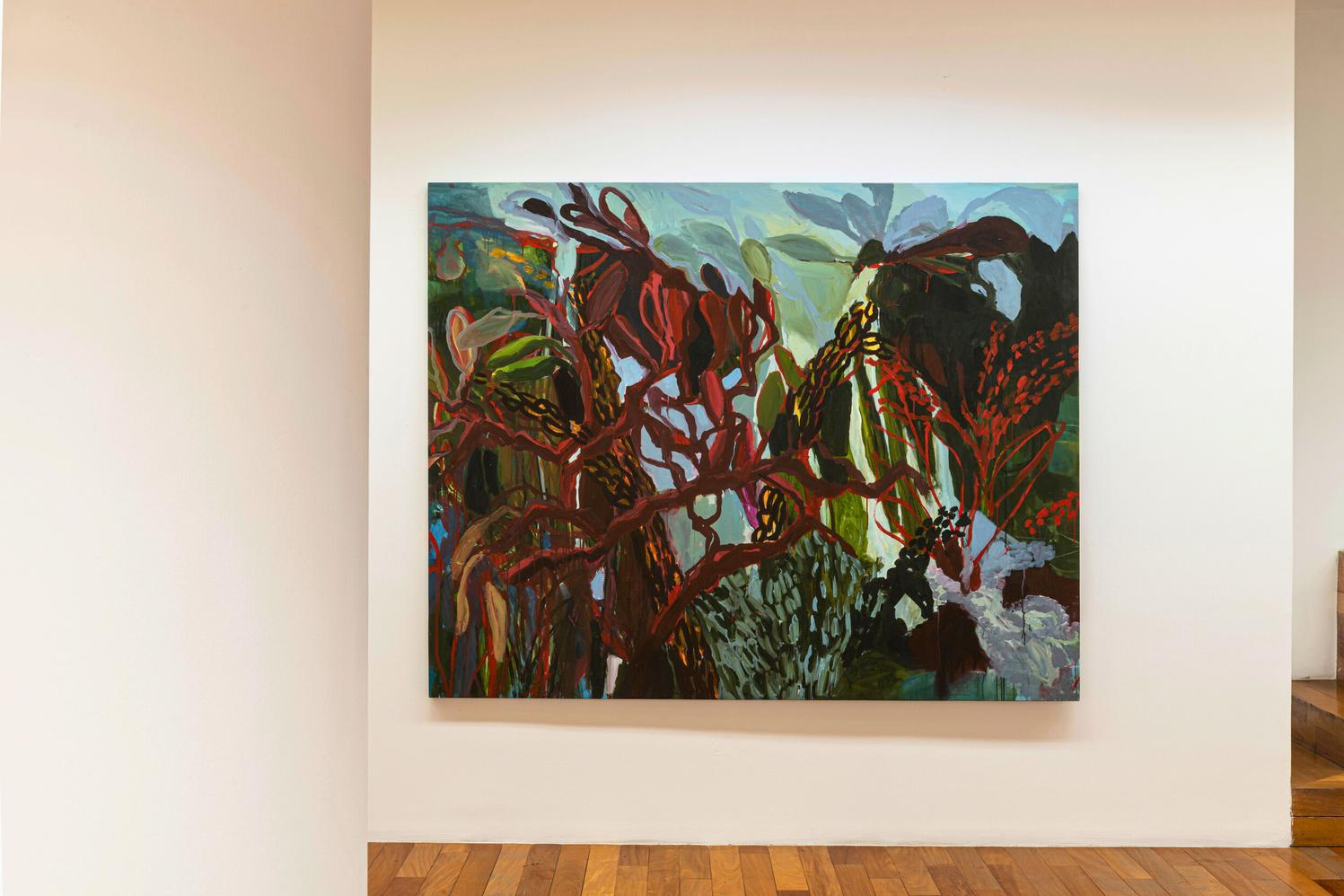
160 x 210 cm
Mata Suja Acrílica sobre tela Acrylic on canvas
Mata Seca, Mata Suja
Louise Ganz
16 de Março a 27 de Abril de 2024
March 16th to April 27th, 2024
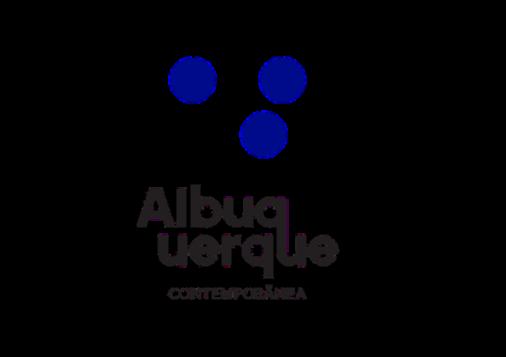
Albuquerque Contemporânea
Rua Antônio de Albuquerque 885 - Savassi
30112-011, Belo Horizonte - Minas Gerais, Brasil
Fotografias por:
Photographs by:
Daniel Mansur
Texto:
Text:
Izabela Pucu
ISBN:
978-65-981908-3-5
albuquerquecontemporanea.com
Murundu / Acrílica sobre tela / Acrylic on canvas / 154 x 146 cm